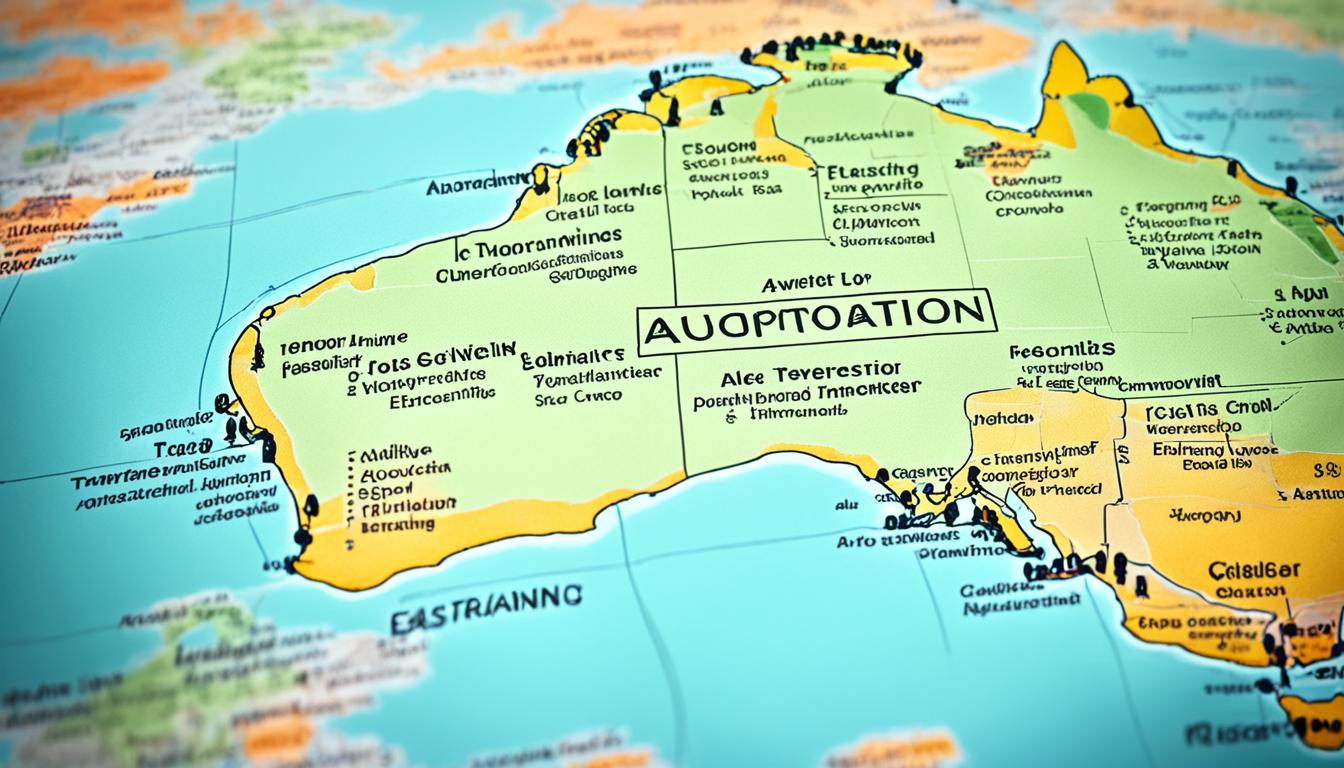
Travel insurance is an essential investment for any trip, providing financial protection and peace of mind. However, you may have noticed that the cost of travel insurance can vary significantly, sometimes seeming quite expensive. But why is travel insurance so expensive? In this section, we will explore the factors that contribute to high travel insurance costs and help you understand the pricing behind it.
When it comes to understanding travel insurance pricing, several factors come into play. Insurers consider various elements to determine the cost of coverage. These factors can include the level of coverage, trip duration and destinations, age and health factors, pre-existing medical conditions, travel activities and sports, deductibles, exchange rates, inflation, and even the insurance provider and policy options.
It’s important to have a clear understanding of these factors as they influence the price you pay for travel insurance. By becoming familiar with the key cost factors and how they interplay, you can make informed decisions about your coverage and potentially find ways to reduce the overall cost.
Key Takeaways:
- Travel insurance costs can vary due to multiple factors.
- Factors influencing travel insurance prices include the level of coverage, trip duration and destinations, age and health, pre-existing medical conditions, travel activities and sports, deductibles, exchange rates, inflation, and the insurance provider and policy options.
- Understanding these cost factors can help you navigate pricing and find affordable coverage.
- Researching providers and policies, comparing options, and considering bundling travel insurance with other policies are effective strategies for managing travel insurance costs.
- Adjusting deductibles can impact premiums, allowing you to find the right balance between cost and coverage.
Factors Affecting Travel Insurance Prices
When it comes to travel insurance, prices can vary significantly. Understanding the factors that influence these prices is essential for making informed decisions about coverage. In this section, we will delve into the main elements that insurers consider when determining the cost of travel insurance, providing a comprehensive breakdown of how these factors impact pricing.
1. Destination
The destination you plan to visit plays a significant role in determining your travel insurance price. Insurers assess the risk associated with different locations, considering factors such as political stability, crime rates, and the quality of healthcare. Popular tourist destinations may have higher insurance costs due to increased demand and higher risks.
2. Trip Duration
The length of your trip also affects travel insurance prices. Insurers consider the duration of your travels as it influences the likelihood of an incident occurring. Longer trips typically come with a higher premium as they increase the exposure to potential risks.
3. Age and Health
Your age and health condition are crucial factors in determining travel insurance prices. Insurers assess the likelihood of you needing medical assistance during your trip. Older individuals and those with pre-existing medical conditions may face higher premiums due to the increased possibility of requiring medical attention while abroad.
4. Coverage Amount
The level of coverage you choose directly impacts the cost of travel insurance. Higher coverage limits and comprehensive policies usually come with higher premiums. It is important to carefully consider your needs and find a balance between adequate coverage and affordability.
5. Deductibles and Coinsurance
Similar to other insurance policies, travel insurance often includes deductibles and coinsurance. Deductibles are the amount you must pay out-of-pocket before coverage kicks in, while coinsurance is the percentage of costs you are responsible for after meeting the deductible. Opting for lower deductibles and higher coinsurance can result in higher premiums.
6. Activities and Sports
If you plan to engage in certain activities or sports during your trip, it can impact your travel insurance costs. High-risk activities, such as extreme sports or adventurous pursuits, may require additional coverage or incur higher premiums due to the increased chance of injury or accidents.
7. Insurance Provider and Policy Options
The insurance provider you choose and the specific policy options available can also influence travel insurance prices. Different insurers have varying pricing structures and underwriting guidelines. It is essential to compare quotes and policy details to find the best coverage at a competitive price.
By understanding the various factors that influence travel insurance prices, you can make informed decisions when selecting coverage for your next trip. Now that we have explored these factors, let’s move on to the different types of coverage and their associated costs in the next section.
Comprehensive Coverage vs. Basic Coverage
When it comes to travel insurance, understanding the different types of coverage available is essential for making an informed decision. Comprehensive coverage and basic coverage are two common options that travelers often consider. However, it’s important to note that the level of coverage you choose can have a significant impact on the cost of your travel insurance. Let’s explore the differences between these two options and help you determine which one suits your needs best.
Comprehensive Coverage
Comprehensive coverage, as the name suggests, provides a wide range of protections and benefits. It typically includes coverage for trip cancellation and interruption, emergency medical expenses, baggage loss or delay, and travel delays. By opting for comprehensive coverage, you can have peace of mind knowing that you’re protected against various unforeseen circumstances that may disrupt your trip.
Basic Coverage
On the other hand, basic coverage offers a more affordable option with more limited benefits. It usually includes essential protections such as emergency medical expenses and trip cancellation coverage. Basic coverage may be suitable for travelers who are more concerned about the cost and are willing to accept fewer benefits and lower coverage limits.
When choosing between comprehensive coverage and basic coverage, it’s crucial to evaluate your individual needs, travel plans, and budget. Consider factors such as your destination, the duration of your trip, the value of your belongings, and your overall health condition. Understanding the specific features and limitations of each coverage option will allow you to make an informed decision.
Here’s a table that summarizes the key differences between comprehensive and basic coverage:
| Features | Comprehensive Coverage | Basic Coverage |
|---|---|---|
| Trip Cancellation and Interruption | Includes comprehensive coverage for trip cancellation and interruption. | May provide limited coverage for trip cancellation and interruption. |
| Emergency Medical Expenses | Offers broader coverage for emergency medical expenses. | Provides essential coverage for emergency medical expenses. |
| Baggage Loss or Delay | Includes coverage for baggage loss or delay. | May not offer coverage for baggage loss or delay, or the coverage may be limited. |
| Travel Delays | Includes coverage for travel delays. | May not offer coverage for travel delays, or the coverage may be limited. |
| Cost | Typically more expensive due to broader coverage and higher benefit limits. | Generally more affordable with lower coverage limits. |
Ultimately, the choice between comprehensive coverage and basic coverage depends on your individual preferences, risk tolerance, and budget. Assessing your specific needs and understanding how different factors influence travel insurance pricing will help you make a well-informed decision that suits your unique circumstances.
Trip Duration and Destinations
When it comes to travel insurance, the duration of your trip and the destinations you plan to visit can significantly impact the cost of coverage. Insurance providers consider several factors related to your trip’s duration and destinations when determining the price of your policy, ensuring that you are adequately protected during your travels.
Longer Trips:
If you plan on embarking on a long journey, such as a month-long backpacking adventure across multiple countries, you may notice higher travel insurance premiums. The longer you are away, the higher the risk for potential travel disruptions, medical emergencies, or trip cancellations. Insurers charge higher premiums to account for the extended period of coverage and the potential risks associated with an extended trip.
It’s important to carefully consider the duration of your trip and ensure that you have adequate coverage in place. Opting for a shorter trip duration, if feasible, may help lower your insurance costs while still providing essential protection.
Destination Factors:
Insurance providers also take into account the destinations you plan to visit when determining your policy’s cost. Different countries and regions carry varying levels of travel risk, such as higher medical costs, political unrest, or natural disasters. As a result, travel insurance rates may differ based on the perceived risk associated with your chosen destinations.
For example, traveling to a remote, politically unstable region may lead to higher premiums due to the increased likelihood of unforeseen events or emergencies. On the other hand, popular tourist destinations with well-established healthcare systems and lower risks may have more affordable insurance options available.
Research and Comparison:
To navigate the factors of trip duration and destinations’ impact on travel insurance costs, it’s important to conduct thorough research and compare policies from different providers. Consider the level of coverage offered, including medical expenses, trip cancellation, baggage loss, and emergency evacuation, to ensure they align with your travel plans and provide adequate protection at a fair price.
Tips for Managing Trip Duration and Destinations Costs
- Consider shortening your trip duration to reduce the overall cost of travel insurance.
- Research destinations with lower travel risk factors to potentially find more affordable insurance options.
- Compare policies from multiple insurance providers to ensure you are getting the best coverage for your trip at a competitive price.
- Review policy terms and conditions to understand what is covered and any limitations specific to your chosen destinations.
- Consult with a travel insurance professional or insurance agent for personalized guidance on selecting the right policy for your trip and budget.
To give you a visual representation of how trip duration and destinations can influence travel insurance prices, refer to the table below:
| Trip Duration | Destinations | Insurance Cost Impact |
|---|---|---|
| Short | Low-risk countries | Lower premiums with more affordable options |
| Long | High-risk countries | Higher premiums due to extended coverage and increased risks |
| Medium | Moderate-risk countries | Moderate premiums reflecting the level of risk involved |
By considering the duration of your trip and the destinations you plan to visit, you can make informed decisions about your travel insurance coverage. Understanding how these factors influence pricing allows you to find a policy that strikes the right balance between comprehensive protection and affordability.
Age and Health Factors
When it comes to travel insurance, age and health are two significant factors that can influence the cost of coverage. Insurance providers take these factors into consideration because they affect the level of risk associated with insuring travelers. Understanding how age and health impact travel insurance prices can help you find affordable options that meet your needs.
As you get older, the likelihood of experiencing health issues increases. Insurance providers consider this increased risk when determining your premiums. Older travelers may face higher travel insurance costs due to potential medical expenses while abroad.
Similarly, your overall health condition can also impact the cost of travel insurance. Insurance providers assess the risk associated with any pre-existing medical conditions you may have. Travelers with pre-existing conditions that require ongoing treatment or have a higher likelihood of complications may face higher insurance costs.
Fortunately, regardless of your age or health, there are ways to find affordable travel insurance options. Some insurance providers offer specialized coverage for older travelers or those with pre-existing conditions. Shopping around and comparing quotes from different providers can help you identify policies that offer the right balance between coverage and cost.
“Insurance providers consider age and health as key factors when determining travel insurance prices.”
“Shopping around and comparing quotes can help you find affordable travel insurance options even with pre-existing medical conditions.”
In addition to comparing quotes, it’s essential to read the policy details carefully. Some policies may have specific limitations or exclusions related to age or pre-existing conditions. Understanding these limitations can help you make an informed decision and avoid any surprises when filing a claim.
Now that we’ve explored how age and health can influence travel insurance prices, let’s move on to our next section where we will discuss another important factor to consider when evaluating travel insurance costs.
Pre-Existing Medical Conditions
When it comes to travel insurance cost factors, pre-existing medical conditions play a significant role in determining the price of coverage. Insurers take these conditions into consideration because they increase the likelihood of claims during your trip. Understanding how insurers assess and price coverage for pre-existing conditions can help you navigate this aspect of travel insurance pricing.
Insurers consider various factors related to pre-existing medical conditions, such as the type of condition, its severity, and the treatment required. They assess the risks associated with these conditions and adjust the premiums accordingly. It’s important to disclose any pre-existing conditions accurately when applying for travel insurance to ensure optimal coverage.
To help individuals seeking coverage for pre-existing conditions, insurers may offer specialized policies or add-ons that provide specific coverage for these conditions. These policies typically come at an additional cost, but they offer peace of mind knowing that your medical needs are safeguarded during your travels.
Insurers understand that individuals with pre-existing medical conditions may have different travel insurance needs. That’s why it’s important to review policies carefully and choose coverage that caters to your specific healthcare requirements.
Strategies for Individuals with Pre-Existing Conditions
If you have a pre-existing medical condition and are concerned about the impact on your travel insurance costs, consider these strategies:
- Shop around for specialized coverage: Different insurers may offer varying options and premiums for coverage related to pre-existing conditions. Take the time to compare different policies and inquire about any specialized coverage options available.
- Consider medical screening services: Some insurers may offer medical screening services that assess your condition and provide a more accurate premium. These screenings can help ensure that your insurance coverage adequately addresses your medical needs without overpaying for unnecessary coverage.
- Review policy exclusions and limitations: Understand the exclusions and limitations related to pre-existing conditions in your travel insurance policy. Ensure that your medical needs are covered and that you have a clear understanding of when coverage may be limited or excluded based on your condition.
By being proactive and aware of how insurers consider pre-existing medical conditions, you can make informed decisions when selecting travel insurance coverage for your specific needs.
Comparing Travel Insurance Options for Pre-Existing Conditions
| Insurance Provider | Specialized Coverage for Pre-Existing Conditions | Add-on Costs | Exclusions and Limitations |
|---|---|---|---|
| ABC Insurance | Yes | $50 per person | Excludes coverage for pre-existing conditions diagnosed within 6 months prior to the trip |
| XYZ Insurance | No | N/A | Includes coverage for pre-existing conditions but limits coverage for related expenses to $500 |
| DEF Insurance | Yes | $30 per person | Provides coverage for pre-existing conditions with no specific limitations or exclusions |
Remember to carefully review the terms and conditions of each policy and consider your specific medical needs before making a decision. By doing so, you can find the travel insurance coverage that best suits your requirements.

Travel Activities and Sports
Engaging in certain travel activities and sports can have a significant impact on the cost of your travel insurance. These activities often come with higher risks, which insurers take into account when determining the price of coverage. Understanding the factors influencing travel insurance prices in this context is essential to budgeting your insurance expenses effectively.
When it comes to travel activities, the level of risk involved plays a crucial role in determining insurance costs. Activities such as skiing, scuba diving, and rock climbing, which are considered high-risk, may lead to higher premiums. Insurers consider the potential for accidents, injuries, and loss or damage to personal belongings when assessing the risk associated with these activities.
Quote: “Traveling involves exploring new experiences, but it’s important to recognize that certain activities come with inherent risks. By understanding these risks and choosing appropriate travel insurance coverage, you can protect yourself financially in case something goes wrong.” – Travel Insurance Expert
Managing Travel Insurance Expenses
While engaging in adventure sports and activities adds excitement to your travel experience, it’s crucial to manage your insurance expenses effectively. Here are a few tips for keeping your travel insurance costs manageable:
- Research Insurance Providers: Shop around and compare quotes from different insurers to find the best coverage options at competitive prices. Look for providers that specialize in coverage for adventure activities.
- Evaluate Coverage Options: Understand the specific coverage offered for the activities you plan to engage in. Consider the limits, exclusions, and deductibles associated with each policy.
- Bundle Policies: If you have other insurance policies, such as home or car insurance, check if your provider offers discounts for bundling travel insurance with these policies.
- Consider Excess Coverage: For activities with higher risks, you may want to consider purchasing an additional excess coverage policy to supplement your primary travel insurance.
- Stay Informed: Check if your chosen activities require any certifications or safety training. Having the necessary qualifications can potentially lower your insurance premiums.
By taking these steps and considering the various travel insurance cost factors, you can enjoy peace of mind while participating in your desired activities without breaking the bank. Keep in mind that it’s essential to strike the right balance between adequate coverage and manageable costs.
| Activity | Risk Level |
|---|---|
| Skiing/Snowboarding | High |
| Scuba Diving | High |
| Rock Climbing | High |
| Bungee Jumping | Moderate |
| White Water Rafting | Moderate |
| Skydiving | High |
Travel Insurance Deductibles
When it comes to travel insurance, deductibles play a crucial role in determining the cost of your premiums. Understanding how deductibles work and their impact on pricing can help you make informed decisions when choosing a travel insurance policy.
A deductible is the amount of money you are responsible for paying before the insurance coverage kicks in. It acts as a cost-sharing mechanism between you and the insurance company. The higher the deductible, the lower your premiums, and vice versa.
By opting for a higher deductible, you assume more financial risk if you need to make a claim. However, this also means that your monthly or annual premiums will be lower. On the other hand, choosing a lower deductible provides you with more coverage upfront, but it typically results in higher premium payments.
It’s essential to consider your personal situation and risk tolerance when selecting a deductible option. If you have the means to cover a higher deductible in case of an emergency, opting for a higher deductible can help reduce your travel insurance costs and potentially save you money.
Choosing the Right Deductible Option
When selecting a deductible option, carefully evaluate your travel plans and financial capacity. Remember that travel insurance is designed to protect you from significant financial losses, such as medical emergencies or trip cancellations.
“Choosing a higher deductible can help you save money on your travel insurance premiums, but it’s important to weigh the potential savings against your ability to cover the deductible amount if something goes wrong during your trip.”
Here are some considerations to keep in mind when choosing the right deductible option:
- Assess your travel destination: If you’re traveling to a location with higher healthcare costs or greater risk of accidents, it may be wise to opt for a lower deductible to ensure you have adequate coverage in case of emergency.
- Evaluate your healthcare coverage: If you already have comprehensive health insurance that provides coverage outside your home country, you may not need a low deductible for medical expenses.
- Weigh the potential savings: Compare the savings on premiums when opting for a higher deductible against the potential financial burden of paying that deductible out of pocket if you need to make a claim.
- Consider your travel budget: Determine how much you can afford to set aside for a deductible without compromising your overall travel budget.
Ultimately, choosing the right deductible option requires careful consideration of your individual circumstances. It’s essential to strike a balance between affordable premiums and adequate coverage, ensuring that you have peace of mind while traveling.
| Deductible Option | Premium Costs | Out-of-Pocket Expense in Case of a Claim |
|---|---|---|
| High Deductible | Lower | Higher |
| Low Deductible | Higher | Lower |
Exchange Rates and Inflation
One of the factors that can significantly influence travel insurance prices is the fluctuation in exchange rates and the impact of inflation. Understanding how these economic factors come into play can help you navigate potential cost increases and make informed decisions regarding your travel insurance.
Exchange rates refer to the value of one currency compared to another. When you purchase travel insurance, the premiums are often calculated based on the currency of the country you are traveling to. If the exchange rate between your home currency and the destination currency fluctuates, it can impact the cost of your travel insurance. A stronger destination currency can result in higher premiums, while a weaker currency may provide more favorable pricing.
Inflation, on the other hand, reflects the general increase in prices of goods and services over time. Insurance providers take inflation into account when setting their premiums to ensure that they can cover potential costs in the future. As inflation rises, insurers may adjust their prices to maintain profitability and account for any potential increase in the cost of claims.
In a global economy where currency exchange rates and inflation rates are constantly changing, it’s important to consider the potential impact on travel insurance prices. Being aware of these factors can help you navigate the fluctuations and make cost-effective decisions.
The Impact of Exchange Rates and Inflation on Travel Insurance Prices
When exchange rates are unfavorable or inflation is high, the cost of travel insurance may increase. This is because insurance providers factor in the potential impact of exchange rate fluctuations or inflation on their claims payouts. To ensure that they can cover any potential costs, insurers adjust their premiums accordingly.
For example, if the exchange rate between your currency and the destination currency weakens, it could lead to higher medical expenses or emergency evacuation costs for insurers. To mitigate this risk, insurers may raise their premiums to account for the increased potential claim costs.
Navigating Exchange Rates and Inflation for Cost-Effective Travel Insurance
While you cannot control exchange rates or inflation, there are steps you can take to navigate these factors and find cost-effective travel insurance:
- Monitor exchange rates: Keep an eye on the exchange rates between your home currency and the destination currency. If you notice favorable rates, consider purchasing your travel insurance during that period to potentially secure more competitive premiums.
- Compare travel insurance options: Different insurance providers may adjust their prices differently in response to exchange rate fluctuations and inflation. Take the time to compare quotes from multiple insurers to find the best coverage at the most competitive rate.
- Consider multi-currency policies: Some insurance providers offer multi-currency policies where you can insure against currency fluctuations. These policies allow you to lock in a specific exchange rate, providing stability and potentially mitigating the impact of unfavorable currency movements.
By staying informed and considering these strategies, you can navigate the influence of exchange rates and inflation on travel insurance prices. This will help you find the most cost-effective coverage that aligns with your travel needs.
Insurance Provider and Policy Options
When it comes to travel insurance, choosing the right provider and policy can have a significant impact on costs. By understanding the available options, you can find affordable travel insurance that meets your needs while providing essential coverage.
Comparing Insurance Providers
Before making a decision, it’s crucial to research and compare different insurance providers. Look for providers that have a strong reputation, reliable customer service, and competitive pricing. Reading customer reviews and testimonials can provide valuable insights into the quality of service offered by each provider.

Policy Evaluation
When evaluating travel insurance policies, pay attention to the specific coverage offered. Policies may differ in terms of medical coverage, trip cancellation protection, baggage loss compensation, and other benefits. Consider your specific needs and choose a policy that provides comprehensive coverage while staying within your budget.
Package Deals
Many insurance providers offer package deals where you can combine travel insurance with other policies, such as home or auto insurance. Bundling your insurance policies can often lead to discounts and savings, making it a cost-effective option to consider.
Specialized Policies
If you have unique travel requirements, such as participating in extreme sports or traveling to remote destinations, specialized policies may be available. These policies are tailored to provide coverage for specific activities or locations, ensuring you have the protection you need without paying for unnecessary coverage.
Insurance Premium Comparison
| Insurance Provider | Premium for Basic Coverage | Premium for Comprehensive Coverage |
|---|---|---|
| Provider A | $50 | $100 |
| Provider B | $60 | $120 |
| Provider C | $55 | $110 |
Comparing premiums across different insurance providers can help you identify more affordable options. As shown in the table above, the cost of basic and comprehensive coverage can vary between providers.
When selecting an insurance provider and policy, it’s essential to strike a balance between cost and the level of coverage. By doing thorough research and comparing multiple options, you can find affordable travel insurance that offers the protection you need for your journey.
Tips for Lowering Travel Insurance Costs
Travel insurance is an essential consideration for any trip, offering peace of mind and financial protection against unexpected events. However, the cost of travel insurance can sometimes be a concern for budget-conscious travelers. Fortunately, there are various strategies you can implement to lower your travel insurance costs without compromising on coverage. Here are some tips to help you save:
1. Shop Around for Quotes
Don’t settle for the first travel insurance policy you come across. Take the time to research and compare quotes from different providers. This allows you to find the best coverage at a competitive price. Consider using online comparison tools to streamline the process and easily compare multiple options.
2. Consider Package Deals
Bundle your travel insurance with other policies, such as rental car insurance or home insurance. Many insurance companies offer discounts when you purchase multiple policies from them. Taking advantage of these package deals can help you save on overall insurance costs.
3. Opt for a Higher Deductible
A deductible is the amount you agree to pay out of pocket before your insurance coverage kicks in. By opting for a higher deductible, you can lower your travel insurance premium. However, ensure that you can comfortably afford the deductible amount in case of a claim.
4. Consider Your Trip Duration
If you’re planning a short trip, consider opting for trip-specific coverage instead of an annual travel insurance policy. Trip-specific coverage often offers similar benefits at a lower cost, making it a more affordable option for shorter trips.
5. Be Mindful of Your Destination
The cost of travel insurance can vary depending on your destination. Some countries or regions may have higher associated risks, leading to higher insurance premiums. When planning your trip, consider destinations with lower insurance costs to help reduce your overall travel insurance expenses.
6. Review Policy Inclusions and Exclusions
Before purchasing travel insurance, carefully review the inclusions and exclusions of the policy. Make sure you are not purchasing unnecessary coverage that may increase your premiums. Tailor your policy to your specific needs to avoid paying for coverage you don’t need.
“By implementing these tips, you can effectively manage your travel insurance expenses and find coverage that fits within your budget.”
| Tip | Description |
|---|---|
| 1 | Shop around for quotes |
| 2 | Consider package deals |
| 3 | Opt for a higher deductible |
| 4 | Consider your trip duration |
| 5 | Be mindful of your destination |
| 6 | Review policy inclusions and exclusions |
Remember that travel insurance is an investment in your peace of mind and financial protection. By implementing these tips, you can effectively manage your travel insurance expenses and find coverage that fits within your budget. Don’t hesitate to explore different options and compare policies to ensure you get the best value for your money.
Reviewing and Comparing Policies
When it comes to travel insurance, reviewing and comparing policies is essential to ensure you get the best value for your money. By understanding the intricacies of each policy and evaluating them effectively, you can make an informed decision that meets your specific needs. Here are some factors to consider when reviewing and comparing travel insurance policies:
- Coverage: Assess the scope of coverage provided by each policy. Look for policies that offer comprehensive coverage for medical expenses, trip cancellations or interruptions, lost baggage, and other essential aspects of travel insurance.
- Exclusions: Identify any exclusions or limitations within each policy. Pay close attention to the conditions and circumstances under which coverage may be denied or reduced.
- Deductibles: Evaluate the deductibles associated with each policy. A deductible is the amount you must pay before the insurance coverage kicks in. Higher deductibles may result in lower premiums, but it’s essential to consider if the deductible is manageable for you in the event of a claim.
- Policy Limits: Determine the maximum reimbursement or payouts for each coverage category. Ensure that the policy limits are sufficient to cover potential expenses that may arise during your travels.
- Network of Providers: Check if the insurance provider has a robust network of healthcare providers and facilities in your destination. This can be particularly important for medical coverage, as it ensures easy access to quality healthcare services.
Comparing policies side by side can provide a clear picture of their strengths and weaknesses. Consider creating a table to help visualize the differences and make an informed decision:
| Insurance Provider | Coverage | Exclusions | Deductibles | Policy Limits |
|---|---|---|---|---|
| Provider A | Comprehensive coverage including medical, trip cancellation, and lost baggage. | No coverage for extreme sports activities. | $100 per claim | $100,000 medical coverage, $5,000 trip cancellation |
| Provider B | Basic coverage with limited medical and trip cancellation benefits. | Excludes pre-existing conditions. | $250 per claim | $50,000 medical coverage, $2,500 trip cancellation |
| Provider C | Comprehensive coverage with high policy limits across all categories. | Does not cover travel to high-risk destinations. | $500 per claim | $250,000 medical coverage, $10,000 trip cancellation |
By comparing policies and analyzing their differences, you can identify the one that offers the best coverage and value for your travel needs. Remember, it’s crucial to choose a policy that aligns with your specific requirements and offers dependable coverage in case of unforeseen events.
Quick Tip:
Always read the policy documents carefully and make note of any questions or concerns you may have. Reach out to the insurance provider directly for clarification or additional information before making your final decision.
Deductibles vs. Premiums Analysis
When it comes to travel insurance, understanding the relationship between deductibles and premiums is essential in making informed decisions. By adjusting your deductible, you can potentially reduce your travel insurance premiums while still maintaining adequate coverage.
In a nutshell, deductible refers to the amount of money you must pay out of pocket before your insurance coverage kicks in. The higher your deductible, the lower your premiums are likely to be. This is because by opting for a higher deductible, you are taking on more financial responsibility in the event of a claim, which reduces the insurer’s risk.
Choosing the right balance between deductibles and premiums is crucial. While a higher deductible can mean lower premiums, it also means you will need to pay more upfront before your insurance coverage begins. On the other hand, a lower deductible may result in higher premiums, but you will have less out-of-pocket expenses if you need to file a claim.
To help you analyze the deductible/premiums relationship, let’s take a look at a hypothetical scenario:
| Deductible | Annual Premium |
|---|---|
| $250 | $500 |
| $500 | $450 |
| $1,000 | $400 |
In this example, you can see that as the deductible increases, the annual premium decreases. However, it’s essential to weigh the potential savings in premiums against the financial impact of a higher deductible.
When deciding on the right deductible for your travel insurance policy, consider your budget, risk tolerance, and the value of the trip you are insuring. If you frequently travel and can comfortably afford a higher deductible, opting for a higher deductible can help you reduce your premiums over time.
Bundling Travel Insurance with Other Policies
One effective way to save on travel insurance premiums is by bundling your travel insurance with other insurance policies you may already have. Bundling refers to combining multiple insurance policies with the same provider, which often results in discounted rates and cost savings.
By consolidating your insurance needs with a single provider, you can take advantage of potential discounts and lower premiums. Bundling travel insurance with other policies not only saves you money but also simplifies the management of your coverage as you only have to deal with one insurer.
“Bundling your travel insurance with other policies can offer significant cost savings and streamline your coverage management.”
When considering bundling travel insurance, it’s important to consider the following:
1. Evaluate your insurance needs
Assess your insurance needs and determine which policies are essential. Common policies to bundle with travel insurance include home insurance, auto insurance, or life insurance. Choose policies that align with your requirements and ensure they adequately cover your needs.
2. Research and compare providers
Take the time to research and compare insurance providers offering bundled options. Assess the reputation, financial stability, and customer reviews of potential insurers to ensure they are reliable and trustworthy. Request quotes from multiple providers to compare prices and policy features.
3. Review terms and conditions
Before committing to bundled insurance, carefully review the terms and conditions of the policies. Pay attention to any restrictions or limitations, deductibles, coverage limits, and exclusions. Ensure that the bundled policies adequately cover your specific travel needs and provide the necessary level of protection.
4. Consult with an insurance agent
If you’re uncertain about which policies to bundle or have questions about the process, it’s beneficial to consult with an insurance agent. They can provide personalized advice based on your unique circumstances and help you make informed decisions regarding policy bundling.
By following these considerations and leveraging the option of bundling travel insurance with other policies, you can not only reduce your premiums but also simplify your insurance portfolio and potentially enjoy additional perks offered by insurers.
| Pros of Bundling Travel Insurance | Cons of Bundling Travel Insurance |
|---|---|
| Cost savings through discounts | Policies not fully customizable |
| Simplified coverage management | May require policy adjustments for customized coverage |
| Potential for additional perks | Limited choice of insurance providers |
Researching Travel Insurance Providers
When it comes to finding the right travel insurance coverage, researching different providers is crucial. This step is essential in understanding the options available to you and ensuring you make an informed decision about your coverage. In this section, we will guide you through the key factors to consider when researching travel insurance providers.
Evaluating Financial Stability
One of the first aspects to assess is the financial stability of the insurance provider. You want to choose a company that has a strong financial foundation to ensure they can honor their obligations in the event of a claim. Research the provider’s financial standing by referring to independent rating agencies such as A.M. Best or Standard & Poor’s.
Assessing Reputation and Customer Reviews
An insurance provider’s reputation and customer reviews can provide valuable insights into their quality of service. Look for feedback from customers who have experienced filing claims and interacted with the company’s customer support. Online review platforms and forums dedicated to travel insurance can be excellent sources of information.
“The travel insurance provider I chose had positive reviews from customers who praised their responsiveness and hassle-free claims process. It gave me confidence in their ability to provide a smooth experience in case of any emergencies during my trip.” – TravelerX
Comparing Coverage Options
While researching providers, take the time to compare the coverage options they offer. Look for policies that align with your specific needs and provide comprehensive coverage at affordable prices. Pay attention to factors such as trip cancellation, medical expenses, baggage loss, and emergency assistance. A table comparing coverage options from different providers can be a helpful visual aid:
| Travel Insurance Provider | Policy Coverage | Price |
|---|---|---|
| Provider A | Comprehensive coverage with $5,000 trip cancellation, $100,000 medical expenses, $1,500 baggage loss, and 24/7 emergency assistance. | $150 |
| Provider B | Basic coverage with $2,500 trip cancellation, $75,000 medical expenses, $1,000 baggage loss, and 24/7 emergency assistance. | $95 |
| Provider C | Comprehensive coverage with $6,000 trip cancellation, $150,000 medical expenses, $2,000 baggage loss, and 24/7 emergency assistance. | $180 |
Customer Support and Claims Process
Consider the quality of customer support and the ease of the claims process when researching insurance providers. Look for accessible customer service channels, such as phone, email, or online chat, to ensure you can easily reach out for assistance. Additionally, check if the provider offers a straightforward and efficient claims process, as this will be crucial if you need to file a claim while traveling.
By thoroughly researching travel insurance providers and considering these key factors, you can make an informed decision that provides you with the coverage you need at an affordable price.
Conclusion
In conclusion, understanding travel insurance pricing is essential to comprehending why travel insurance can be expensive. Throughout this article, we have delved into the various factors that contribute to the high costs of travel insurance, providing insights and strategies to help you reduce travel insurance premiums and find more affordable options.
By considering factors such as trip duration, destinations, age, health, pre-existing medical conditions, and travel activities, you can make informed decisions that align with your needs and budget. Additionally, evaluating deductibles, comparing policies, and bundling travel insurance with other policies can further help in reducing costs.
Remember that researching reputable travel insurance providers and comparing their offerings is crucial in finding affordable options without compromising on coverage. By implementing the tips and strategies shared in this article, you can navigate the world of travel insurance pricing and find peace of mind during your travels.





